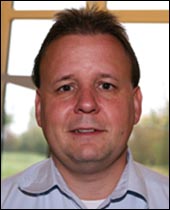
|
Stephan Hug
CTO Private Banking IT, Credit Suisse
Credit Suisse
|
Credit Suisse Group is a world-leading financial services company, advising clients in all aspects of finance around the world, around the clock. Recently, the bank embarked on a series of strategic initiatives to align IT and business priorities. These initiatives focused on aggressive international growth in the private banking sector and higher cross selling across divisions. Credit Suisse also desired higher economies of scale by centralizing its centers for excellence and increasing its standardization and re-use of applications globally.
To support these considerable initiatives, Stephen Hug, CTO Private Banking, Credit Suisse, looked for a solution to help reduce IT complexity and to more tightly align Credit Suisse’s IT activities with its business strategy. After a detailed evaluation, Credit Suisse decided to implement alfabet’s planningIT to support its global, enterprise wide initiatives.
According to Hug, “Our goal was to ensure that we invested in IT as strategically as possible. This is essential for business/IT alignment. We not only wanted to implement new functionality to develop new markets or business areas, but also wanted to make investments in the existing infrastructure to keep it alive and up-to-date – in the same way you maintain and modernize a house.”
Credit Suisse is a large, complex and international enterprise. To manage the complexity of Credit Suisse’s enterprise architecture management, the project team first split the landscape into blocks the bank calls “domains.” Credit Suisse uses a domain model to serve as a functional division of the bank. Next, each application was assigned to a domain. The domains help Hug’s group easily oversee the bank’s total portfolio of more than 3000 applications. Normally, this would be too much for a single person to oversee. But now with the applications divided into 20 domains, it makes it manageable for Hug’s team and colleagues in other business units.
Hug has done a similar domain division along with appropriate technologies, such as servers and databases. In this way, he manages the complexity of the business.
“In addition to a good methodology, we needed a good tool to manage our enterprise architecture management complexity,” said Hug. “alfabet’s planningIT is a tremendous support for us. Without this tool, we’d be lost. It has a central repository, which is absolutely essential. Two years ago, we started to implement alfabet’s repository and together with the model, the processes, the governance and the people-- we now have good control.”
Today, Credit Suisse uses alfabet’s planningIT to manage its strategic IT planning, applications and technologies in a very holistic way. The tool allows the bank to manage the lifecycles of applications, the underlying technologies and the interfaces. It also gives the IT department important answers to various questions, such as, “If a technology reaches its end of life and must be replaced – who is affected?”. Today, Credit Suisse can find out these answers very quickly, so that it can plan with greater accuracy and predictability on how the company’s application landscape evolves over the course of time.
Credit Suisse is considered a pioneer in the field of Service Oriented Architecture (SOA) and also uses planningIT and its domain model to manage its SOA services.
Hug explains, “When applications communicate with one another, it is important that this is realized by managed interfaces. If there are point-to-point connections that are directly based on data structures of an application, then any changes made to this data structure will directly impact all associated applications. We distinguish between public and private interfaces and the domain model helps us to clearly define where to implement private and public services. It also helps us to draw clear lines between the applications.”
Initially, Credit Suisse started this methodology with its CORBA services to open its large mainframe. This ended up being a very successful strategy that helped the bank’s mainframe survive the past decade, despite industry talk of the “end of the mainframe.” Now, Credit Suisse is entering the next phase and starting to partition the mainframe so that applications can be replaced faster than before.
All in all, Credit Suisse’s methodology and planningIT has brought about many positive changes to the bank. This includes:
- A new systematic methodology to continuously reduce IT complexity and segment the application and technology landscapes into manageable domains.
- Collaborative workflows that support existing enterprise-wide IT governance and application management processes.
- A collaborative and integrative approach to IT planning that supports Credit Suisse’s “one global bank” enterprise strategy, which has grown as a result of significant M&A activity in recent years.
- The ability to identify gaps and synergies in IT to support business processes, because of a holistic and systematic approach to managing lifecycles.
Hug states, “We first implemented planningIT in Switzerland before we finally went global with it. Now, the tool is used by stakeholders across Credit Suisse’s global organization dealing with 3000 applications including 3000 technical components and their relations to each other. Frankly, we couldn’t have hoped for a better fit to our needs. We truly appreciate planningIT’s holistic approach to IT planning and management. It covers governance issues, process related issues and provides a very good model for dealing with roles and stakeholders.”


Stephan Hug
CTO Private Banking IT, Credit Suisse
Credit Suisse
Stephan Hug’s 16+ years of experience in software engineering and architecture began in R&D at a major Swiss industrial company researching advanced measurement technologies. He moved into the banking arena 13 years ago where he has held positions as developer, project manager and development manager before moving into architecture a few years ago.
At Credit Suisse, Mr. Hug worked in Investment Banking IT covering the bank’s locations in Zurich, New York and London before moving to its Private Banking IT arm. Mr. Hug has a Masters of Science degree from the Swiss Federal Institute of Technology in Zurich.
|
|


